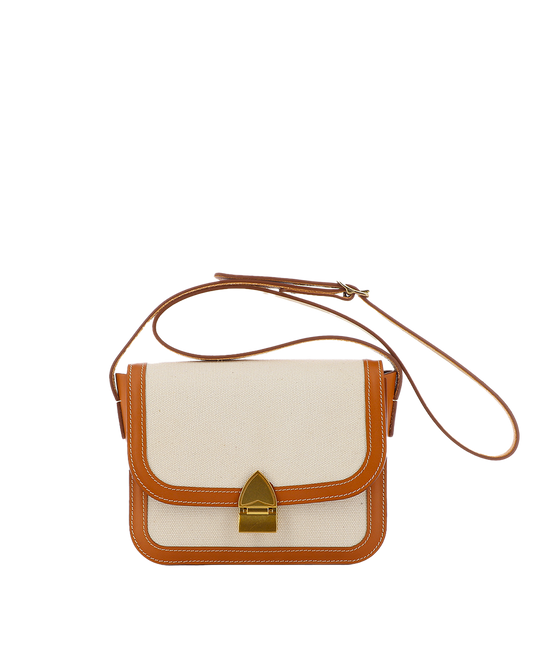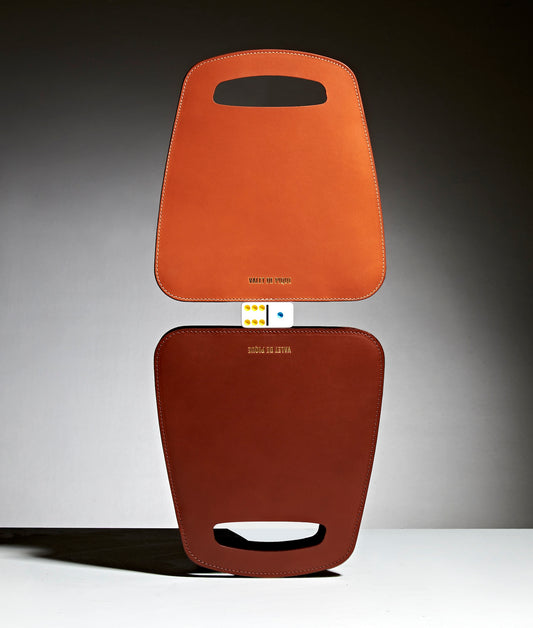Backgammon! This ancient strategy game that evokes sunny afternoons, the gentle clinking of wine glasses and lively conversations between friends. But did you know that behind this game lies a fascinating rule? Today, we are going to dive into the world of backgammon, a game that appeals to intellectuals and epicureans alike. Accompany me on this journey, where luxury and tradition meet for our greatest pleasure.
Backgammon how to play?
Backgammon is a captivating strategy game played on a single board, with two dice and two players. It artfully blends the art of thinking and the fun of play, while offering a timeless aesthetic.
Backgammon how to place the pawns?
The Backgammon board is made up of 24 triangles, called points, divided into four distinct sections: your inside game, your outside game, your opponent's inside game and their outside game. To start a game, each player places their pawns in a specific arrangement, usually symmetrical.

Starting position
Moving pawns
The movement of the pawns is done following a U-shaped path. You advance your pawns from your opponent's inner game to their outer game, then to your outer game and finally your inner game. The opponent moves in the opposite direction.

The dice determine the number of movement points. For example, if you roll a 4 and a 3, you can move a pawn by 7 points or two pawns separately by 4 and 3 points.
Knock and enter
If one of your pawns lands on a triangle occupied by an opposing pawn, you can “hit” it. The struck opponent's pawn is placed on the bar and must be reintroduced into the game before you can move other pawns.
Removal of pawns
When all your pawns are in your inner game, you start removing them from the board. You remove a pawn according to the number indicated by the die, starting with the triangle corresponding to the highest number.
Objective of the game

The first player to remove all their pawns wins the game. However, Backgammon is also a game of blocking and strategy, where you must place your opponent in difficult situations to save time.
In summary, Backgammon is an elegant and strategic game that combines thinking, luck and friendly competition. Whether you are a novice or an experienced player, Backgammon offers a rewarding and entertaining gaming experience. So, prepare your board, roll the dice and let yourself be seduced by the timeless charm of Backgammon.
Backgammon, with its captivating rules and sophisticated aesthetic, is much more than just a game. It is an art of living, an invitation to refinement and reflection. By adopting this beautiful tradition, you will enrich your daily life with a touch of French elegance and conviviality. So, are you ready to take on the challenge of backgammon and transform each game into a celebration of luxury and culture? Roll your dice!
The history of Backgammon: a journey through the centuries
Backgammon, the game of strategy and chance that still captivates us today, has a rich and fascinating history that dates back several millennia. Follow me on this journey through time to discover the origins and evolution of this timeless game.
The ancient origins of Backgammon

The history of Backgammon begins in the ancient civilizations of the Middle East, almost 5,000 years ago. Archaeological remains and historical records suggest that similar games were played in ancient Mesopotamia, Egypt and Persia. These ancestral games, often played on aprons carved in stone or earth, were already primitive incarnations of the Backgammon we know today.
The rise in medieval Europe

Over the centuries, the game traveled through trade routes and military conquests, eventually reaching medieval Europe. It was adopted by the noble classes and royal courts, becoming a symbol of social status and scholarship. The rules of the game have evolved, becoming more complex to adapt to the tastes and requirements of European players.
Modern Backgammon: a universal game

With the advent of the modern era and the expansion of global trade, Backgammon continued to spread across continents. It has conquered new audiences and been adapted to different cultures, while retaining its fundamental principles. Today, Backgammon is a universal game, played and appreciated all over the world, by young and old alike.
Backgammon in popular culture
Over time, Backgammon has found its way into popular culture, appearing in films, books and even television shows. It is often associated with elegance, intelligence and refinement, reflecting its gaming image for strategic minds and lovers of luxury.
The legends and fascinating evolution of Backgammon
Backgammon is much more than just a game; it is the fruit of a history rich in legends and cultural developments. Discover the captivating stories surrounding the origin of this ancient game and its journey through the centuries.
The mystical legends of Backgammon
One of the most popular legends about the origin of Backgammon dates back to a time when the Hindus sought to challenge the intelligence of the Persians. Sending a complex chess game, they did not expect that the Persians would quickly find the secret of this game. But Buiziurcmehr, a wise Persian, not only mastered chess but also introduced a new game: Backgammon . Hindus are said to have spent twelve years understanding the rules and objective of this fascinating game.
In the 3rd century BC, in Persia, Backgammon had a symbolic and mystical dimension. Astrologers used the game to predict the destiny of rulers, viewing the board as a representation of the sky and the movements of the pawns as the movements of the stars.
The evolution of Backgammon over time
Backgammon has gone through the ages, undergoing transformations and adapting to different cultures. In Mesopotamia it was known as "tahte nard", translated as "fight on the wooden board". In Europe, it became popular thanks to the Crusaders in the 12th century, having various names such as "tric-trac" in France, "tavla" in Turkey and "tablero" in Spain.
The materials used for boards and dice also evolved from stone and wood to ivory, stone, or clay. The modern rules of Backgammon were formalized by the Englishman Edmon Hoyle in the 18th century, giving rise to the game we know today.
What does “Backgammon” mean?
The term "Backgammon" is derived from the Saxon "baec" (return) and "gamen" (game), referring to the return of "beaten" pawns to the game. This name reflects one of the key strategic aspects of Backgammon, where the recovery and reintegration of pawns can play a crucial role in the progress of the game.
Backgammon is much more than just a game; it is a cultural heritage, a silent witness to the history of humanity. From its ancient roots in Middle Eastern civilizations to its current status as a global game, Backgammon continues to enchant and fascinate players of all ages and backgrounds. So, the next time you sit down at a Backgammon board, remember this rich and varied history, and appreciate even more the timeless fun of this captivating game.























































